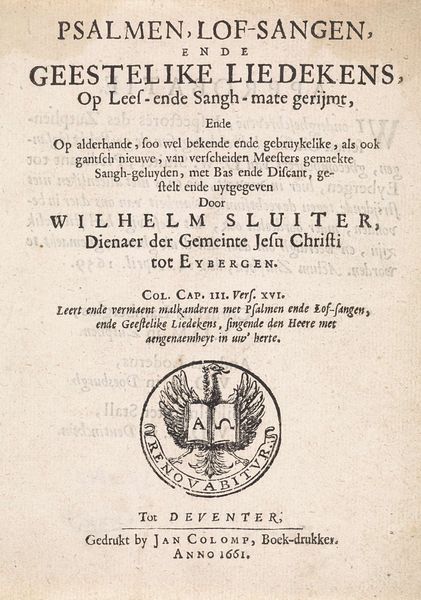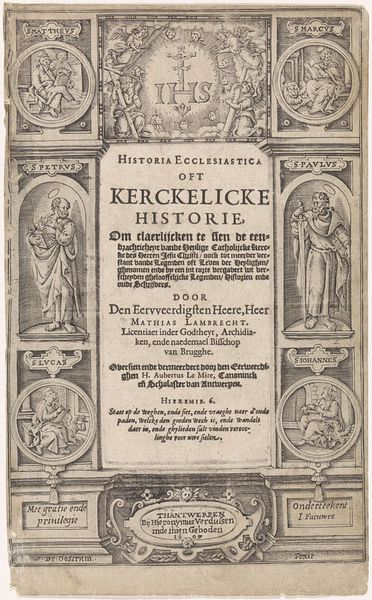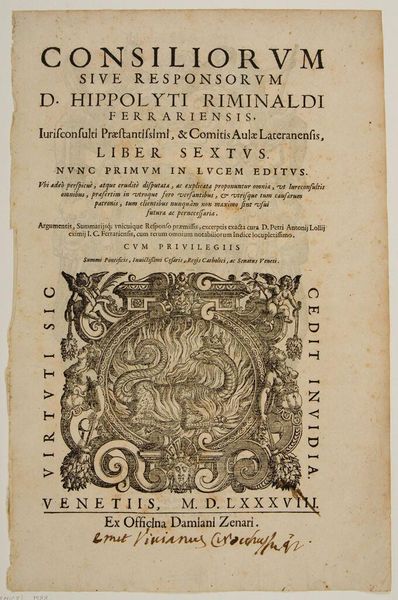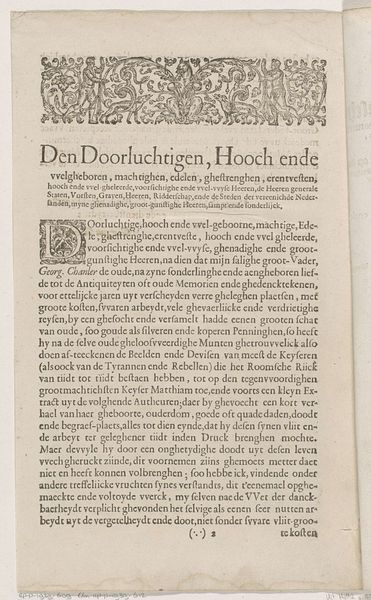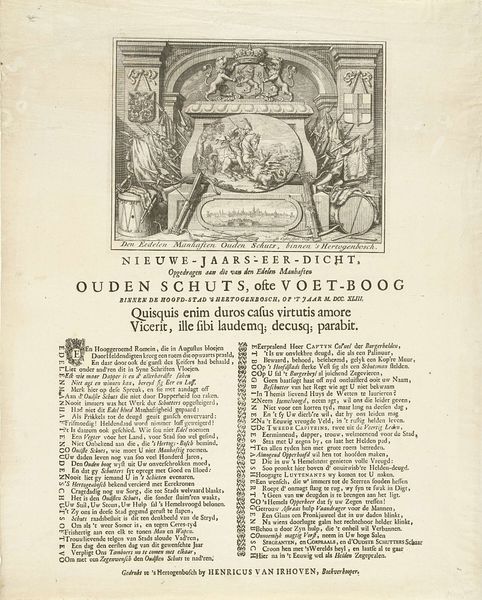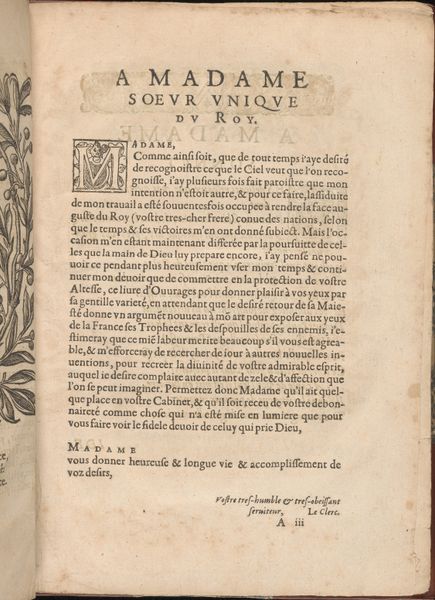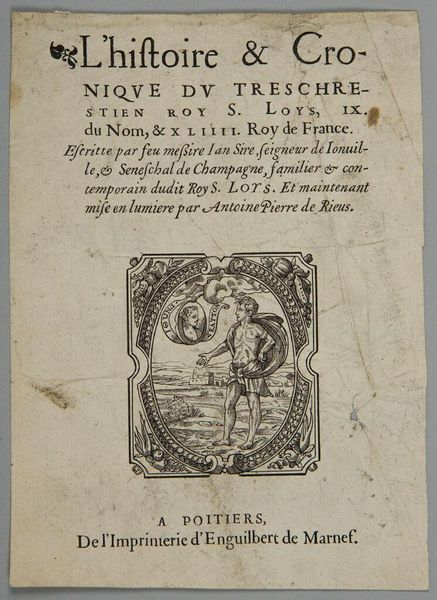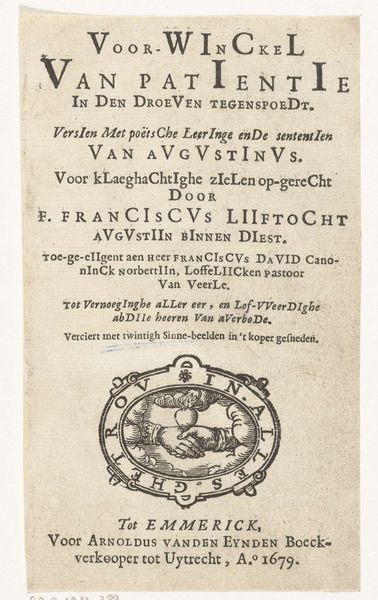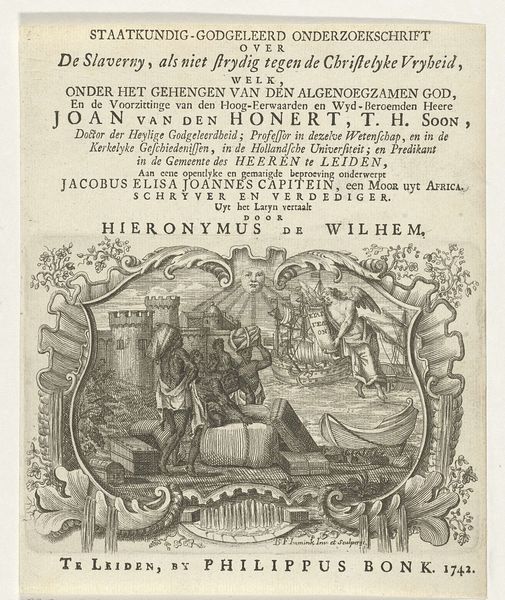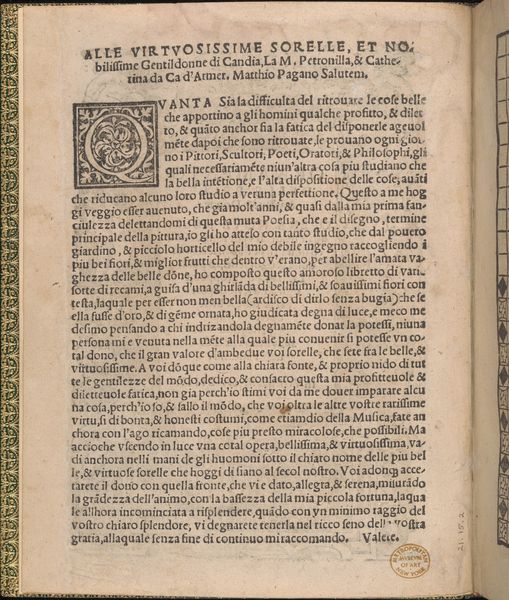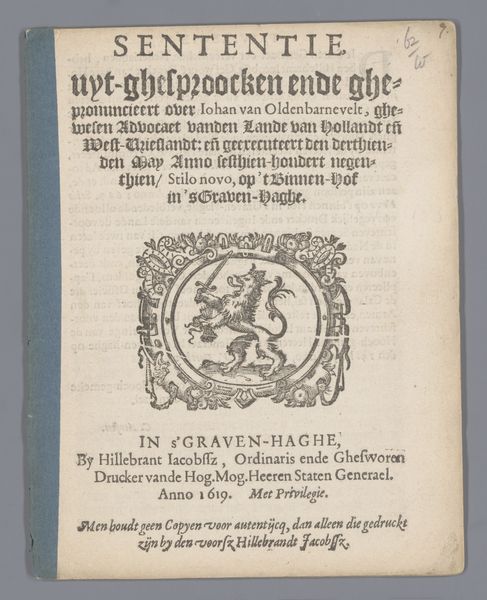
Titelpagina voor: Jehan Baptista Houwaert, Den stryt van de kloecke maechden, 1622 1622
0:00
0:00
graphic-art, print, typography, engraving
#
graphic-art
#
baroque
# print
#
typography
#
engraving
Dimensions: height 178 mm, width 118 mm
Copyright: Rijks Museum: Open Domain
Editor: So, here we have the title page for Jehan Baptista Houwaert’s "Den stryt van de kloecke maechden," from 1622. It’s an engraving, and the typography gives it this authoritative feel, like a proclamation. But there’s also this almost whimsical illustration in the middle... What’s your interpretation of its cultural relevance? Curator: That illustration, precisely, complicates any straightforward sense of authority. We see an allegorical figure, perhaps representing Virtue, but surrounded by everyday objects: kitchen implements. This points to the complex relationship between the public sphere, dominated by men, and the private, domestic world of women. The "stryt" or "struggle" in the title likely alludes to the social pressures and expectations placed upon women during the Dutch Golden Age. How might this title page function as a form of marketing this struggle, and for whom? Editor: Interesting! So the publisher is trying to make the case for women's strength within a culture dominated by men? Is the choice of the Baroque style significant to how women’s roles were publicly received? Curator: The Baroque, with its emphasis on drama and emotion, provided a visual language to express those social dynamics. Think of it as visual rhetoric deployed within a very specific socio-political context. This wasn't simply a matter of accurately reflecting society. This imagery was used to encourage discourse in both the upper and lower class. Given what we know, is the purpose meant to showcase or critique women's roles in 17th century society? Editor: Hmm, I hadn’t considered the marketing aspect, thinking about how this piece engages in conversation about social roles rather than just depicting it. That gives me a lot to think about. Curator: Indeed, art is seldom just 'about' something. It's 'doing' something. Analyzing its cultural function is crucial. It can offer insights into societal norms, power dynamics, and the continuous reshaping of our collective history.
Comments
No comments
Be the first to comment and join the conversation on the ultimate creative platform.

